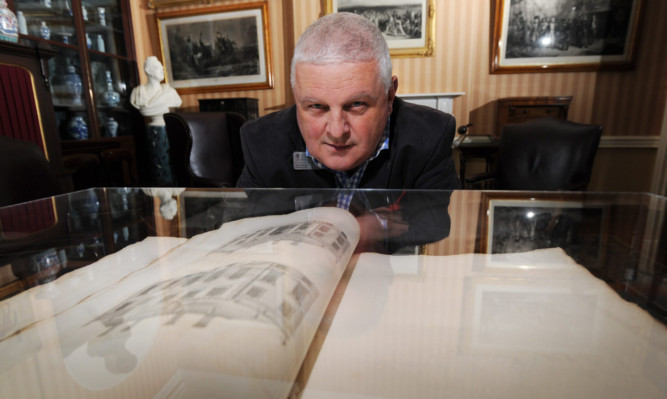A rare book on a Fife architect’s greatest work has found its spiritual home in Angus after 200 years.
William Adam designed or contributed to some of Scotland’s grandest buildings over a 30-year period in the early 18th century, including Inveraray Castle, Haddo House and Dalkeith Castle.
A private collector has now lent the Vitruvius Scoticus, a vellum collection of Adam’s work and influences released almost 60 years after his death, to House of Dun by Montrose.
The family seat of the Erskines at Dun was itself designed by Adam in the 1720s.
The property is owned by the National Trust for Scotland and manager John McKenna said he is delighted to welcome “a keynote document” to a specially built case in the library.
Mr McKenna said: “This book is a huge reference point for many an architect and we’re quite excited, because we can see architects from around the world beating a path to our door to see it.
“It’ll be kept in the new library and we thought it would be good to turn a page every month. It’s a stunning addition to the house’s collection.”
Adam was born in Linktown of Abbotshall, now in Kirkcaldy, in 1689. His paternal grandfather was Archibald Adam, a laird in Angus.
During his nearly 30-year career as an architect, Adam designed, extended or remodelled more than 40 country houses including the Lawyers House and Taymouth Castle in Perthshire, and undertook numerous public contracts including the original Edinburgh Royal Infirmary on Infirmary Street.
In the 1720s Adam planned to publish a book of architectural drawings of Scottish houses, including his own work and that of others. His Vitruvius Scoticus was named after Colen Campbell’s Vitruvius Britannicus.
The copy on loan to the House of Dun is thought to be one of only 30 in existence.
